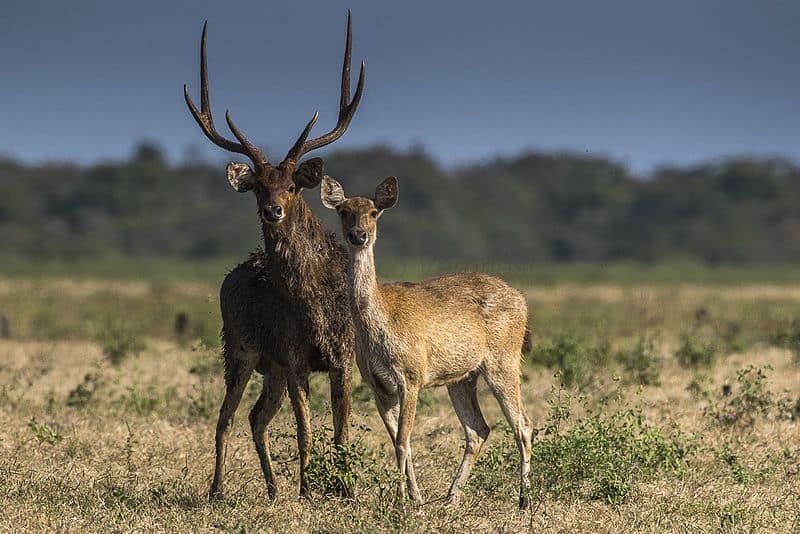
Javan Rusa Facts
- Firstly, it must be noted that the unique and impressive Javan Rusa has an extremely restricted endemic habitat range.
- However, the actions of mankind have also introduced it into a widespread portion of the Southern Hemisphere.
- Given its rather limited natural habitat range, as well as other factors, the IUCN has, quite understandably, listed this animal as Vulnerable.
- Sadly, this remarkable mammal also now faces the same other threats to its existence that many species find themselves facing.
- These threats primarily include climate change and also habitat loss, both due to human activity and encroachment on its habitat.
Related Articles
Javan Rusa Physical Description
Most notably, the beautiful Javan Rusa displays a quite noticeable degree of sexual dimorphism, just as virtually all related species do.
Males attain a rather significantly larger size than females, averaging a head-to-body length of about 6.1 ft (1.86 m), compared to 4.7 ft (1.44 m) for females.
In addition, the males also develop a stockier build, attaining an average weight of roughly 353 lb (160 kg), whereas females average 163 lb(74 kg).
Also, in coloring, the pelage of this wonderful mammal typically displays a shade of grayish-brown and usually appears quite coarse in texture.
Most notably, however, the ears remain its most distinguishing feature, being among the largest of related species in relation to body size.
- Kingdom: Animalia
- Phylum: Chordata
- Class: Mammalia
- Order: Artiodactyla
- Family: Cervidae
- Genus: Rusa
- Species: R. timorensis
Javan Rusa Distribution, Habitat, and Ecology
Firstly, the magnificent Javan Rusa appears to have evolved as endemic solely to the islands of Timor, Bali, and Java, in Indonesia, in Asia.
However, through the actions of humans, this amazing animal has now been introduced to dozens of other islands throughout the region, as well as Australia.
Fortunately for it, the Javan Rusa has proven itself to be rather adaptable, inhabiting savannas, deciduous forests, and even parklands.
Also, as a herbivore, it feeds primarily on a variety of leaves, fruit, and grasses, and does not drink water at all, acquiring all its water from its food.
In addition, the natural predators of this amazing creature include the dhole, the Javan leopard, pythons, crocodiles, and even the Komodo Dragon.
Finally, this deer, like most related species, typically lives as a social animal, with individuals rarely being spotted alone.
Species Sharing Its Range
Check out our other articles on 5 Magnificent Reptiles of Mexico, Striped Possum, Great Dismal Swamp, Little Auk, Executioner Wasp, Red Trillium, Weedy Seadragon, Hermann’s Tortoise
